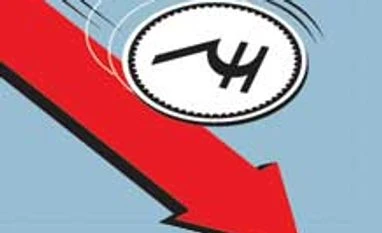The rupee fell on Monday, posting its worst month since the record low levels of August 2013, as the dollar continued to strengthen against emerging market currencies over growing bets for an early hike in U.S. interest rates.
The rupee fell around 2.1 percent in September, the most since a fall of 8.8 percent in August last year, when the currency was in the midst of the worst market turmoil since the balance of payment crisis of 1991.
Gains earlier in the year have stalled, with the rupee falling around 2.64 percent in the July-September quarter, around growing worries that improving U.S. economic data would allow the Federal Reserve to start raising interest rates.
That has trumped the outlook for domestic interest rates given the Reserve Bank of India on Tuesday kept the repo rate unchanged and sent a strong signal that it will refrain from easing until it is confident that consumer inflation can be reduced to 6 percent by January 2016.
"The dollar has been gaining, with the yen and euro both struggling against it," said Manis Thanawala, director at Greenback Forex, a currency risk advisory firm in Mumbai.
"Also, there were half-yearly corporate payments and position squaring by banks. Traders wanted to stay light before the holidays."
Also Read
The partially convertible rupee ended at 61.7450/61.7550 per dollar compared with Monday's close of 61.53/54.
The rupee hit an intra-day low of 61.83, a level last seen on March 5 after the euro fell below 1.26 against the dollar.
The weakening rupee comes as the dollar gained more than 7 percent against a basket of major currencies over the past three months and was poised to finish the month with its best quarterly gain in six years.
In the offshore non-deliverable forwards, the one-month contract was at 62.09/19, while the three-month was at 62.72/82.
)